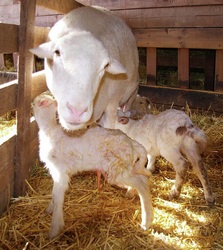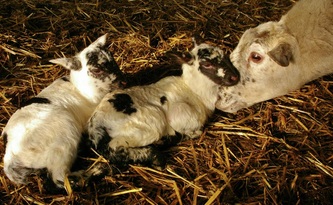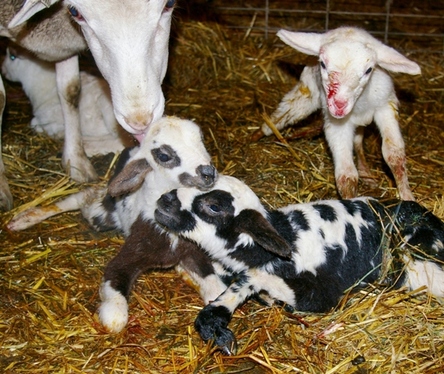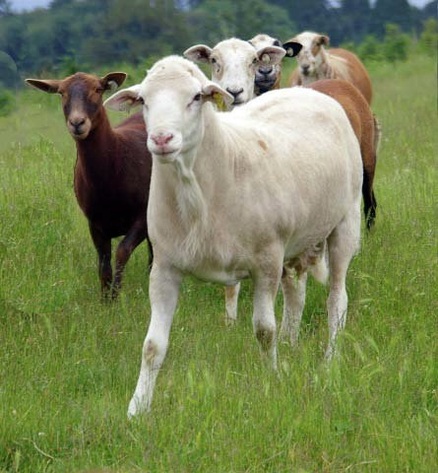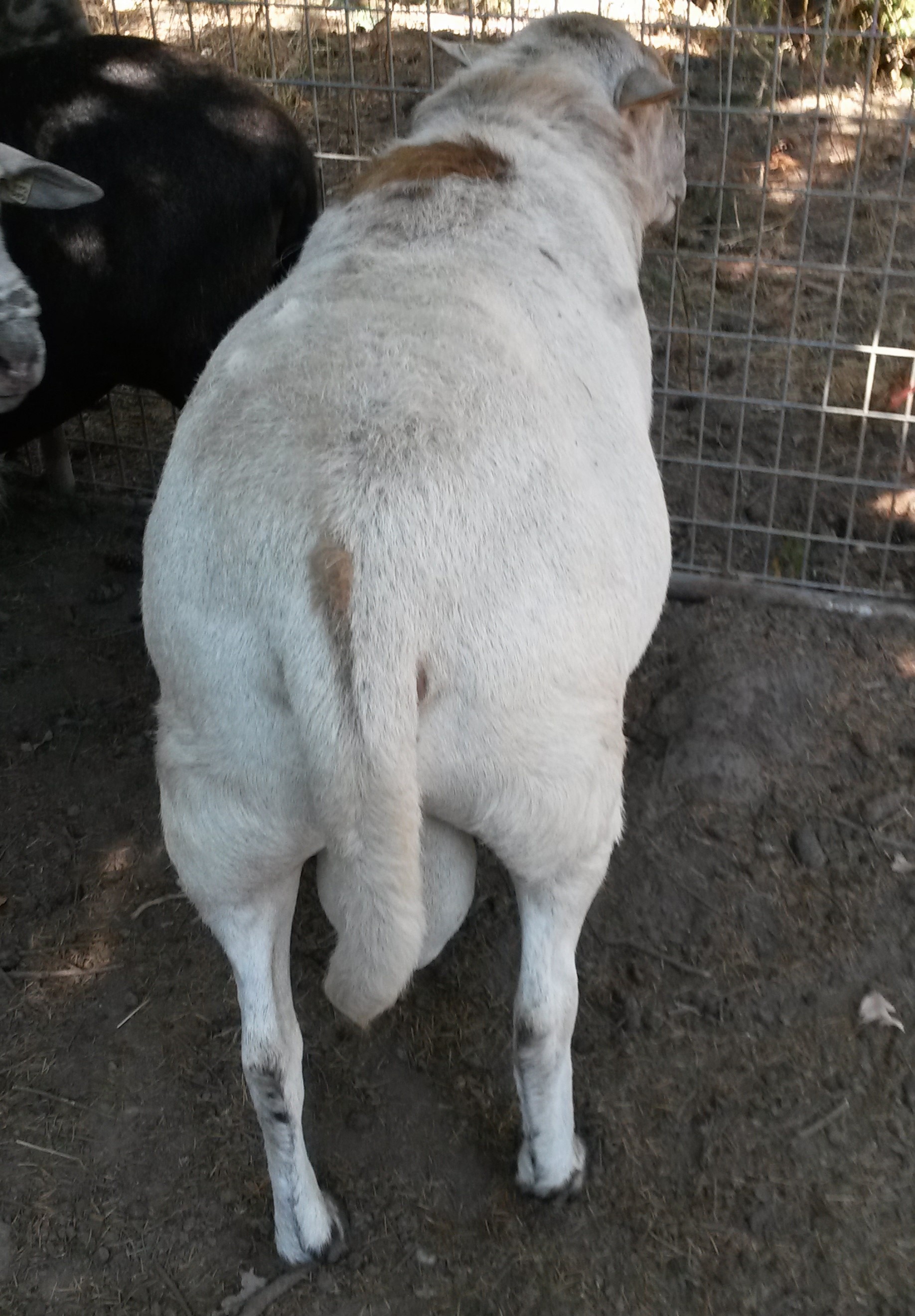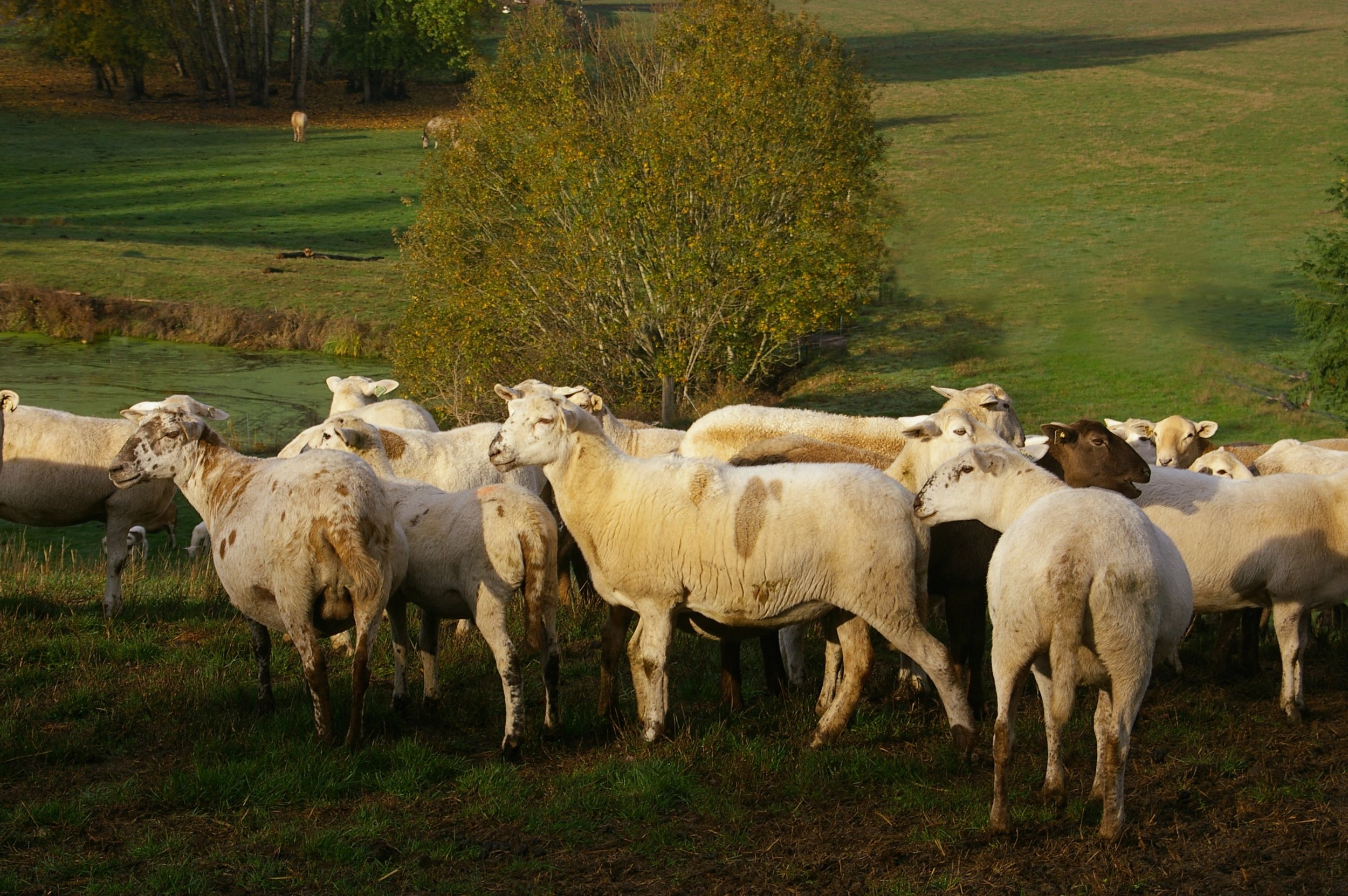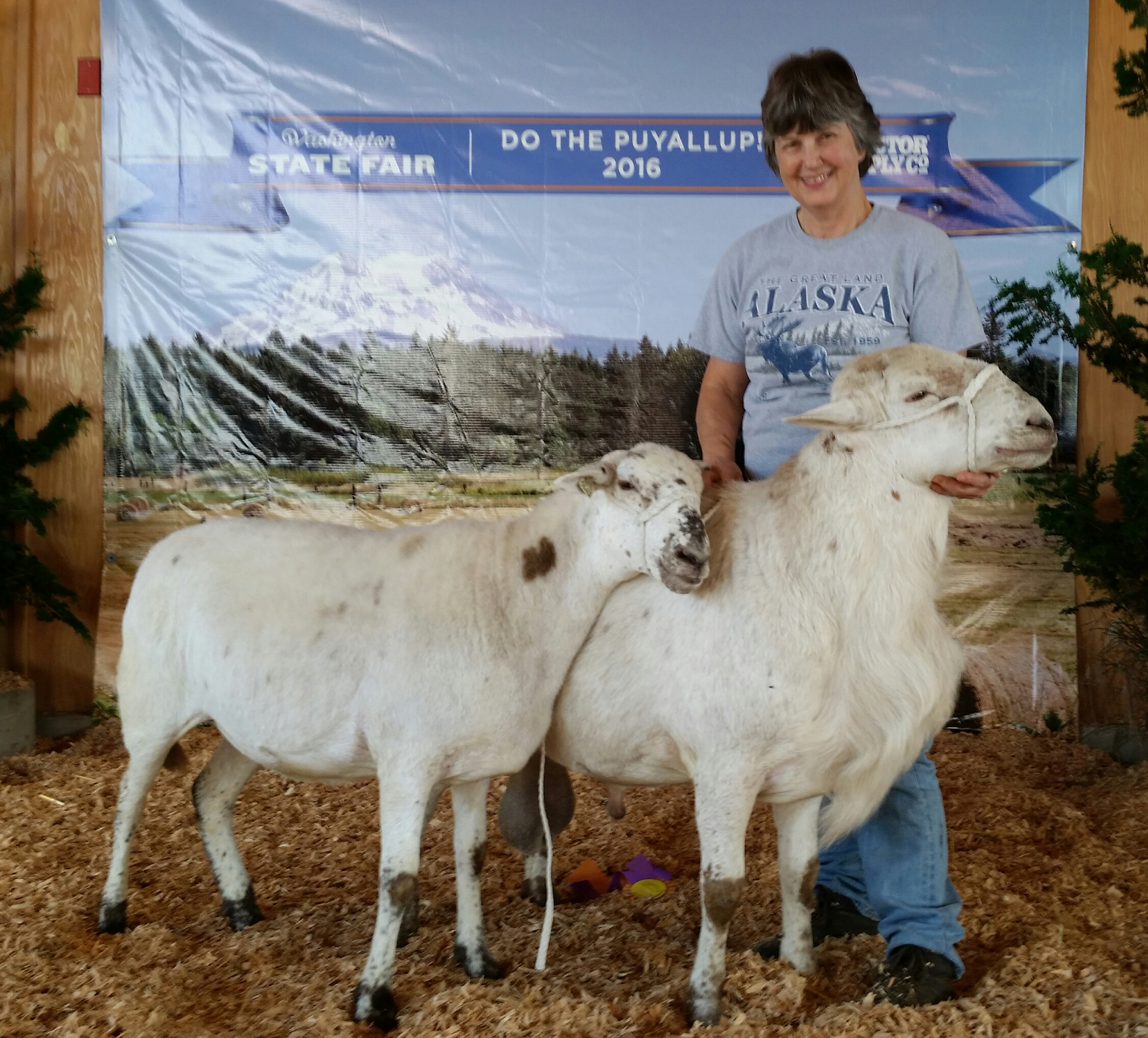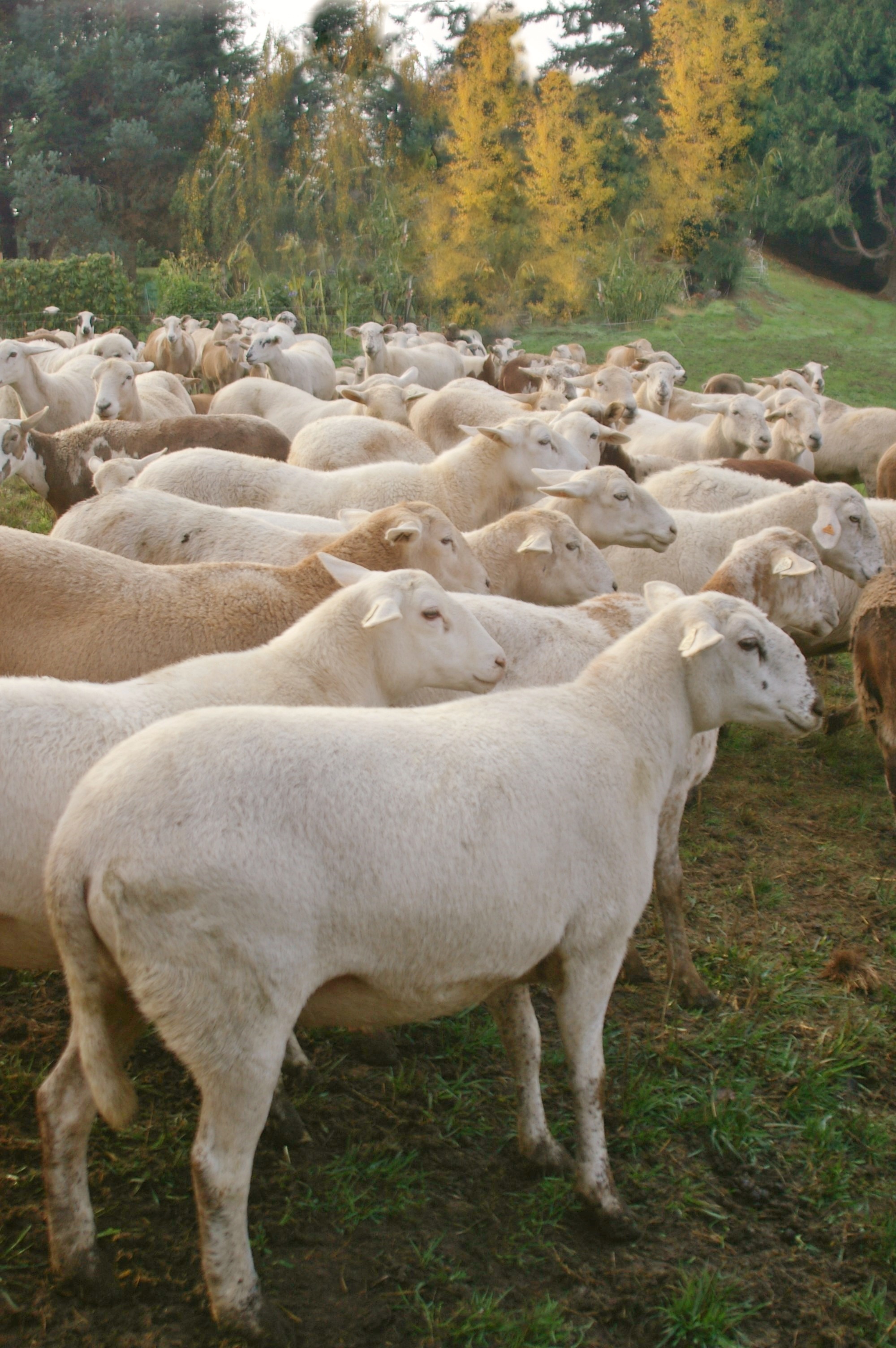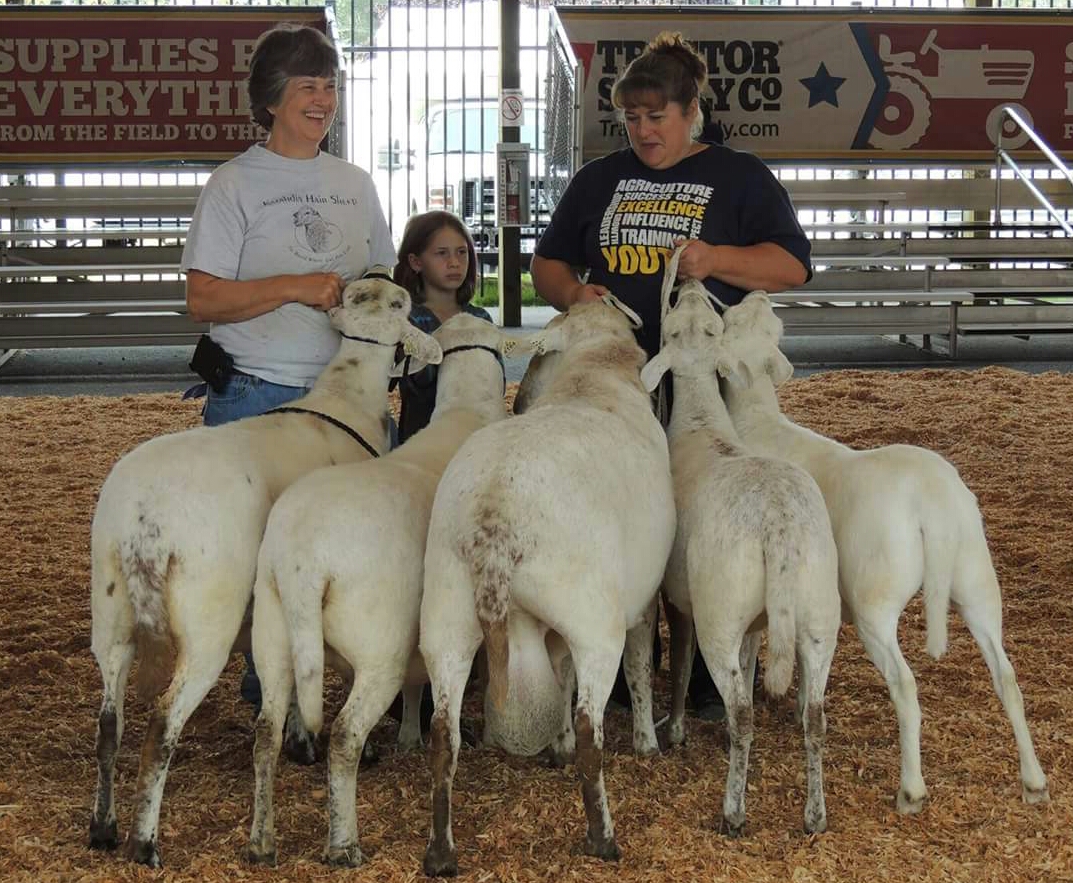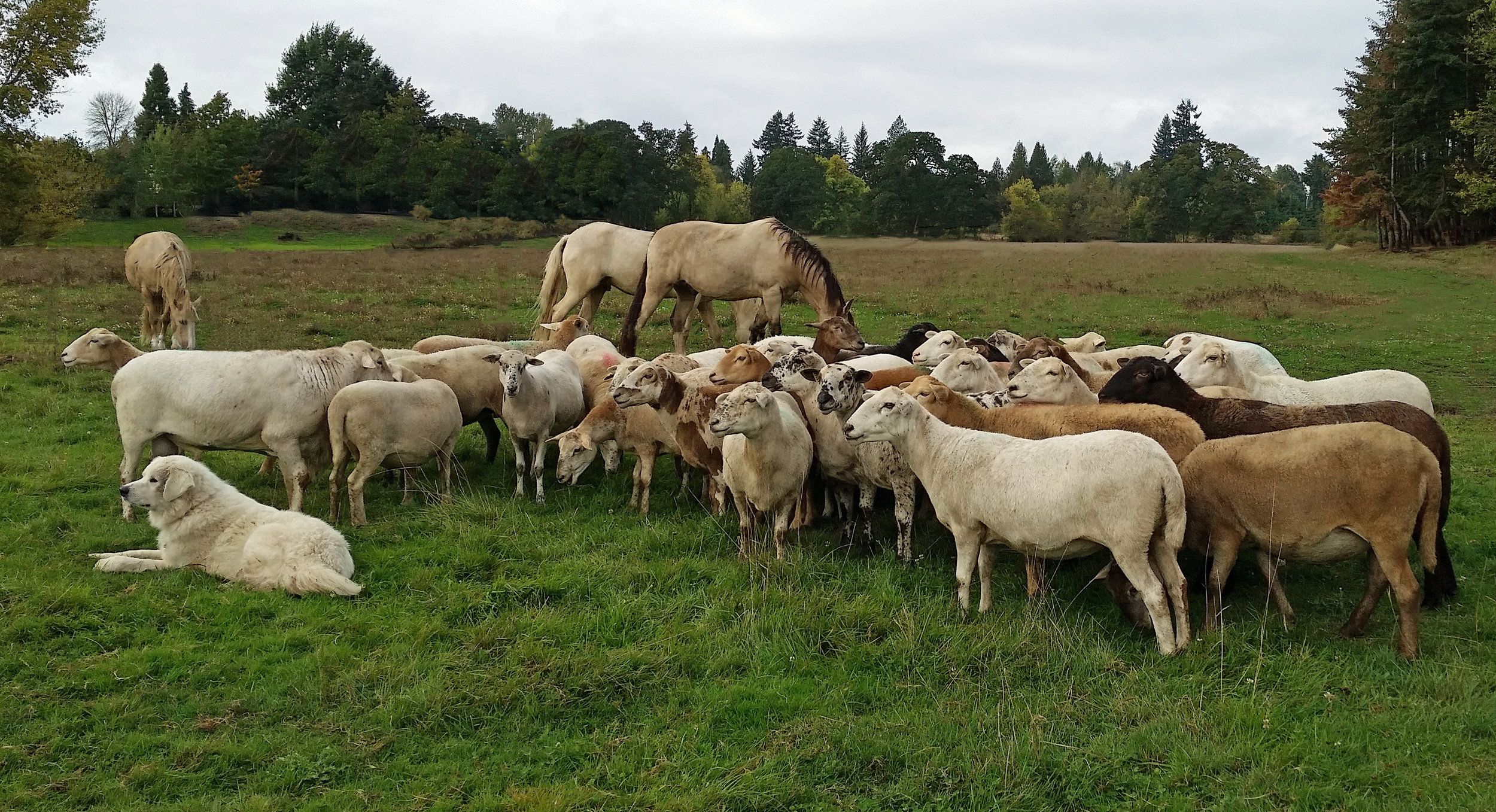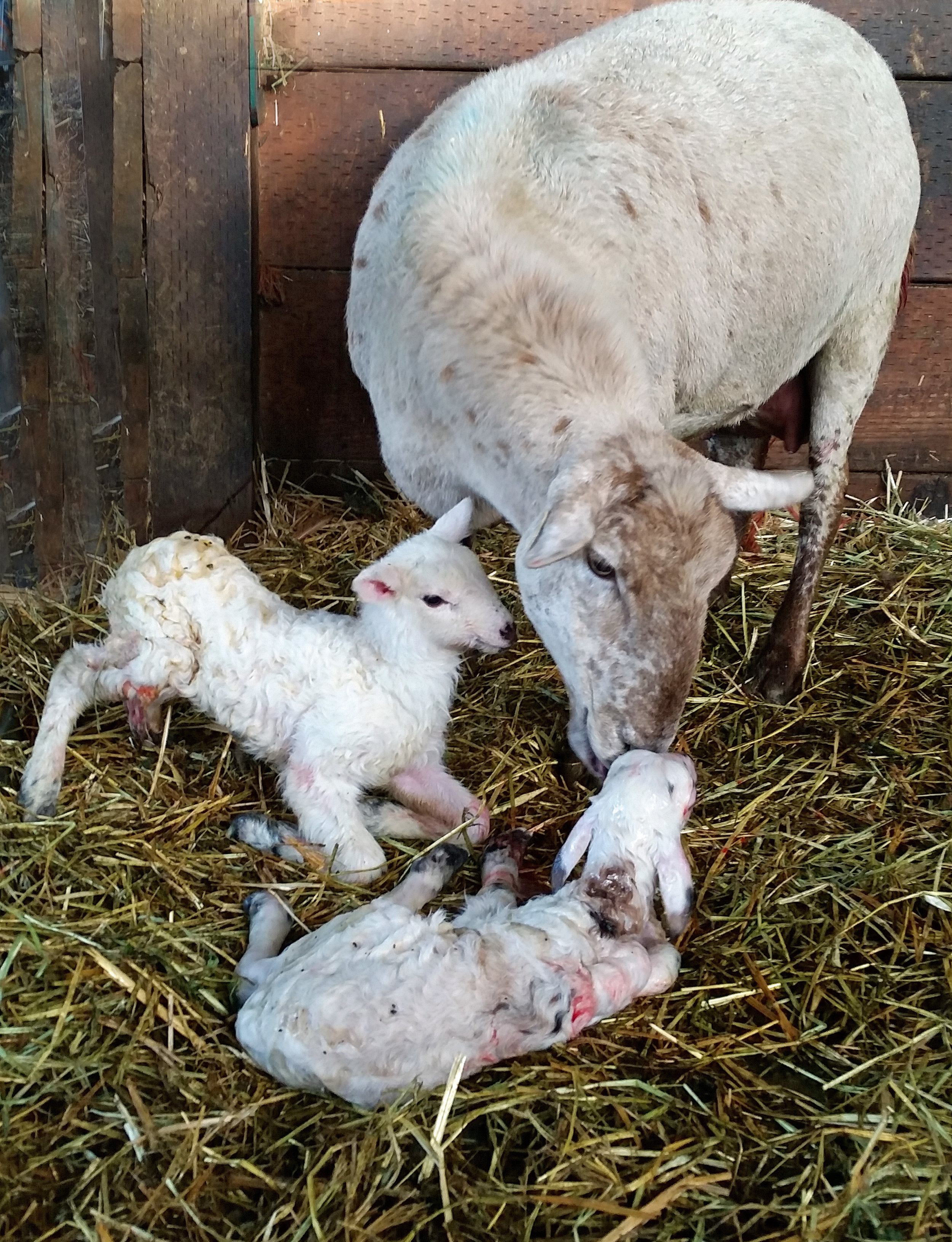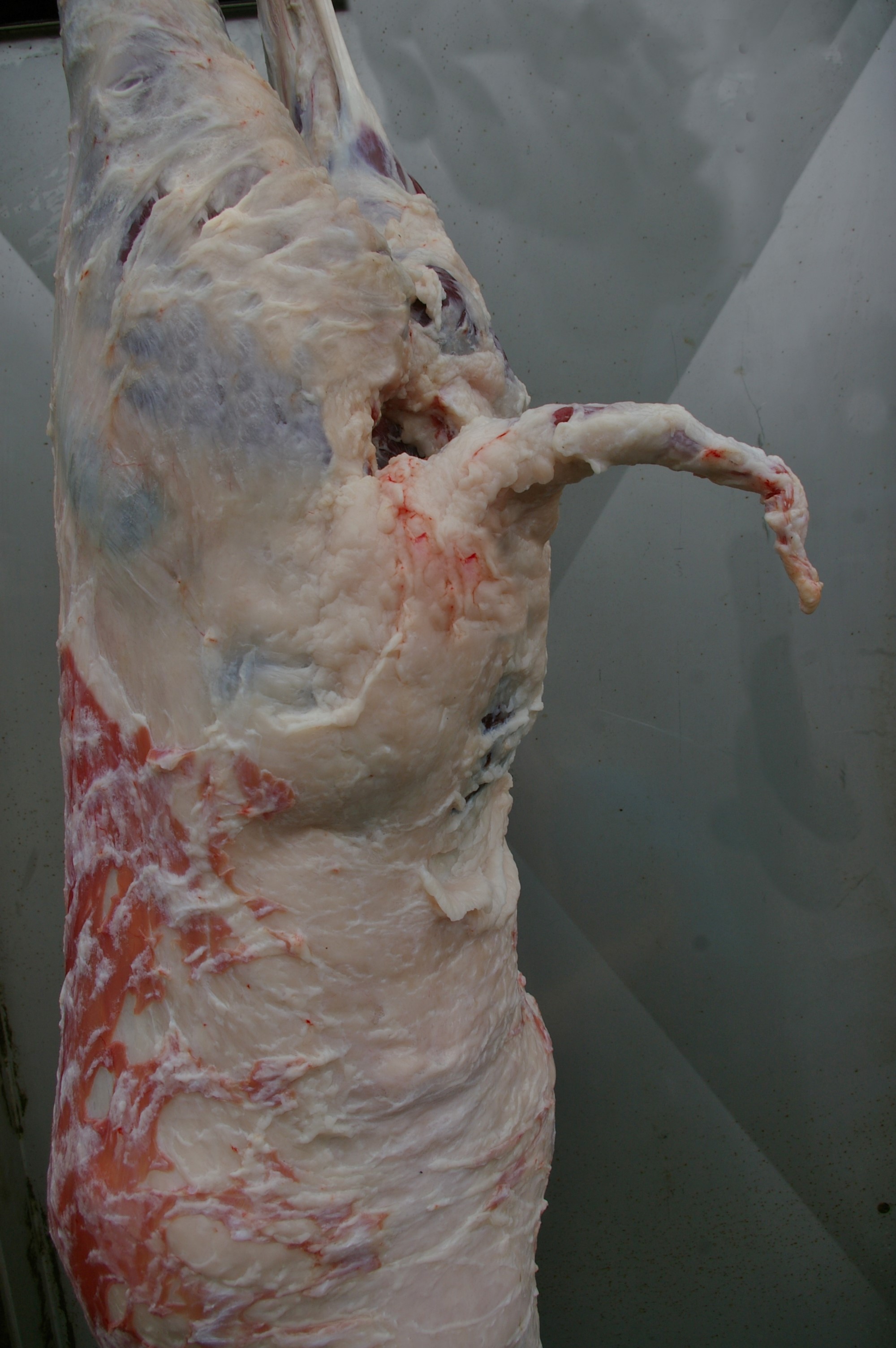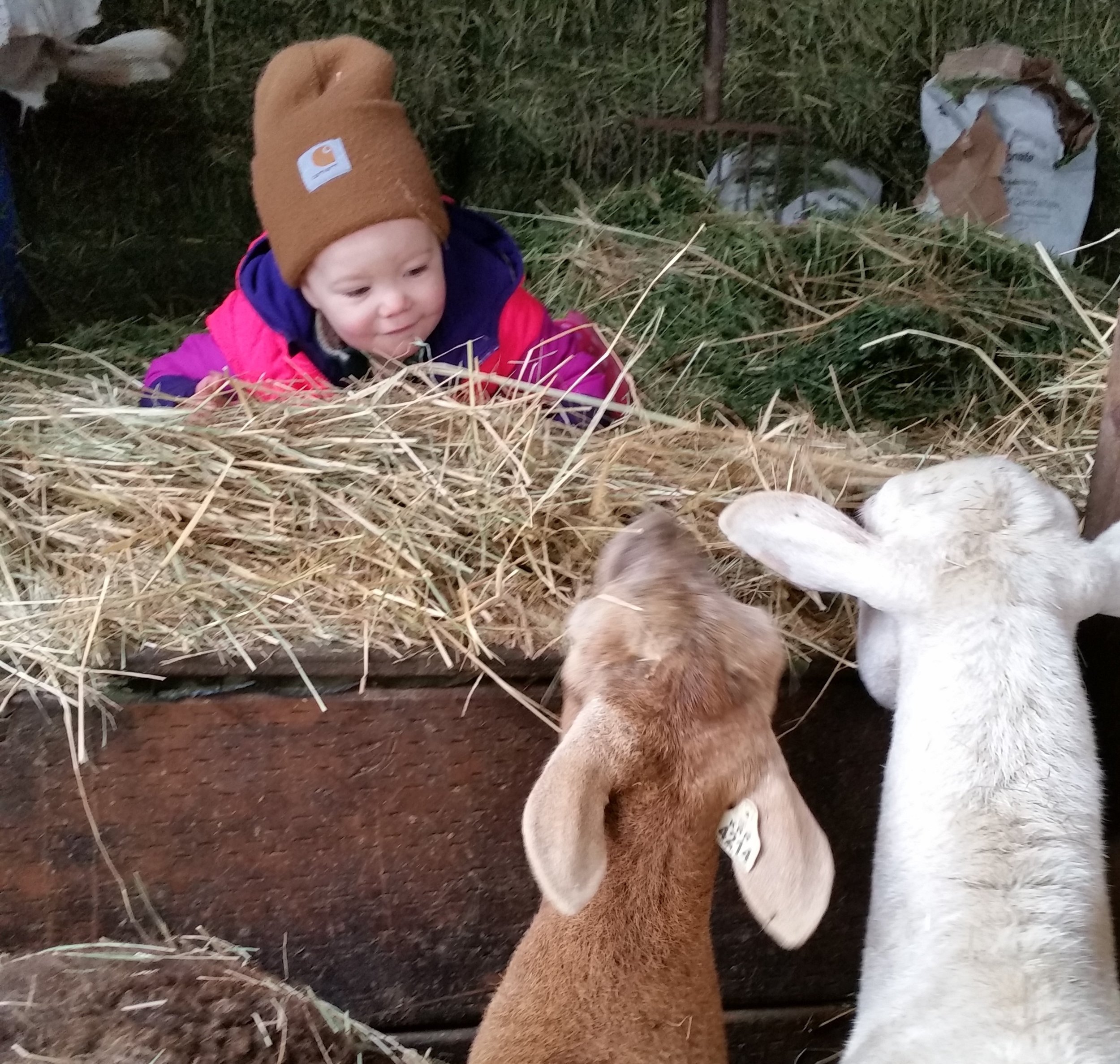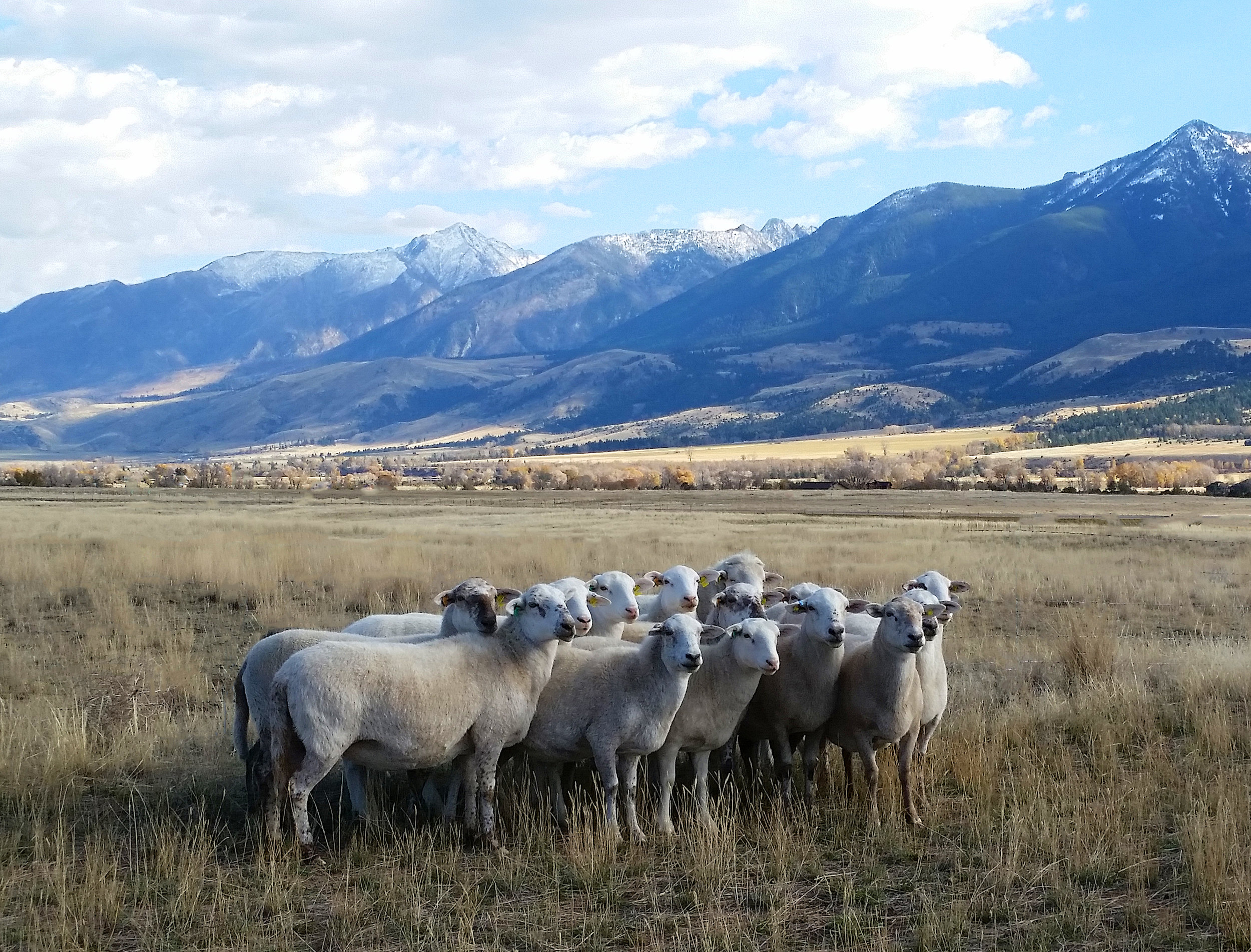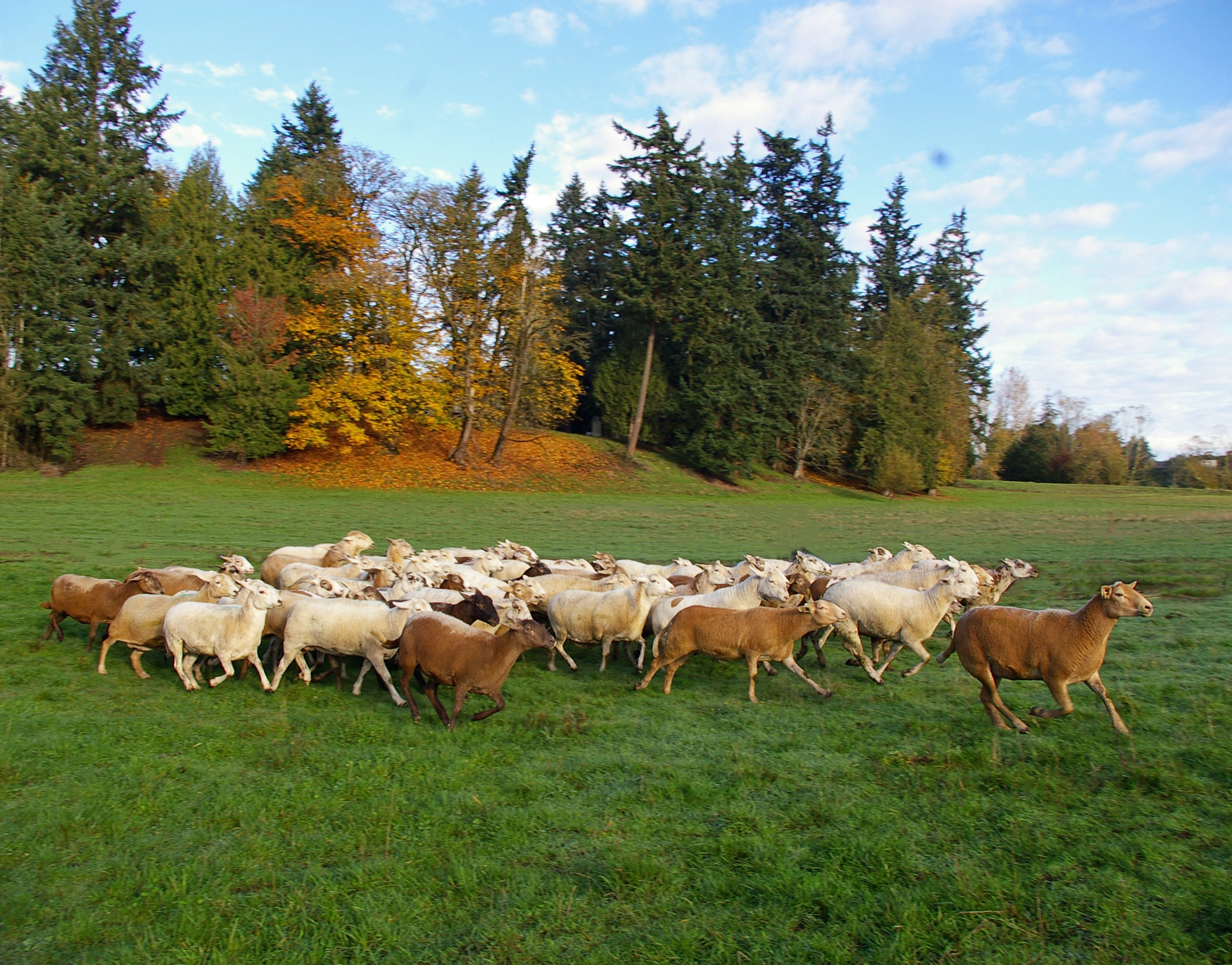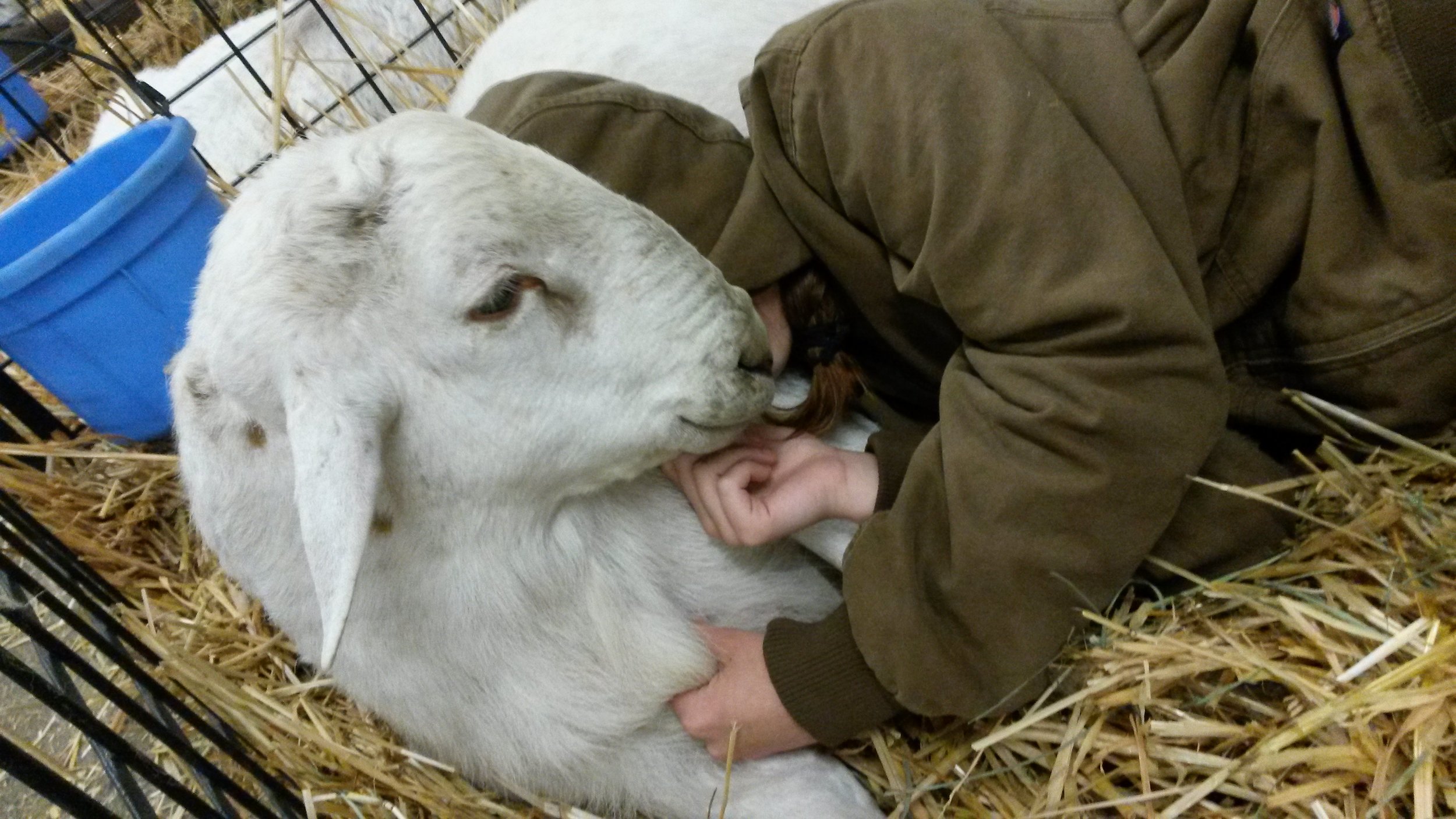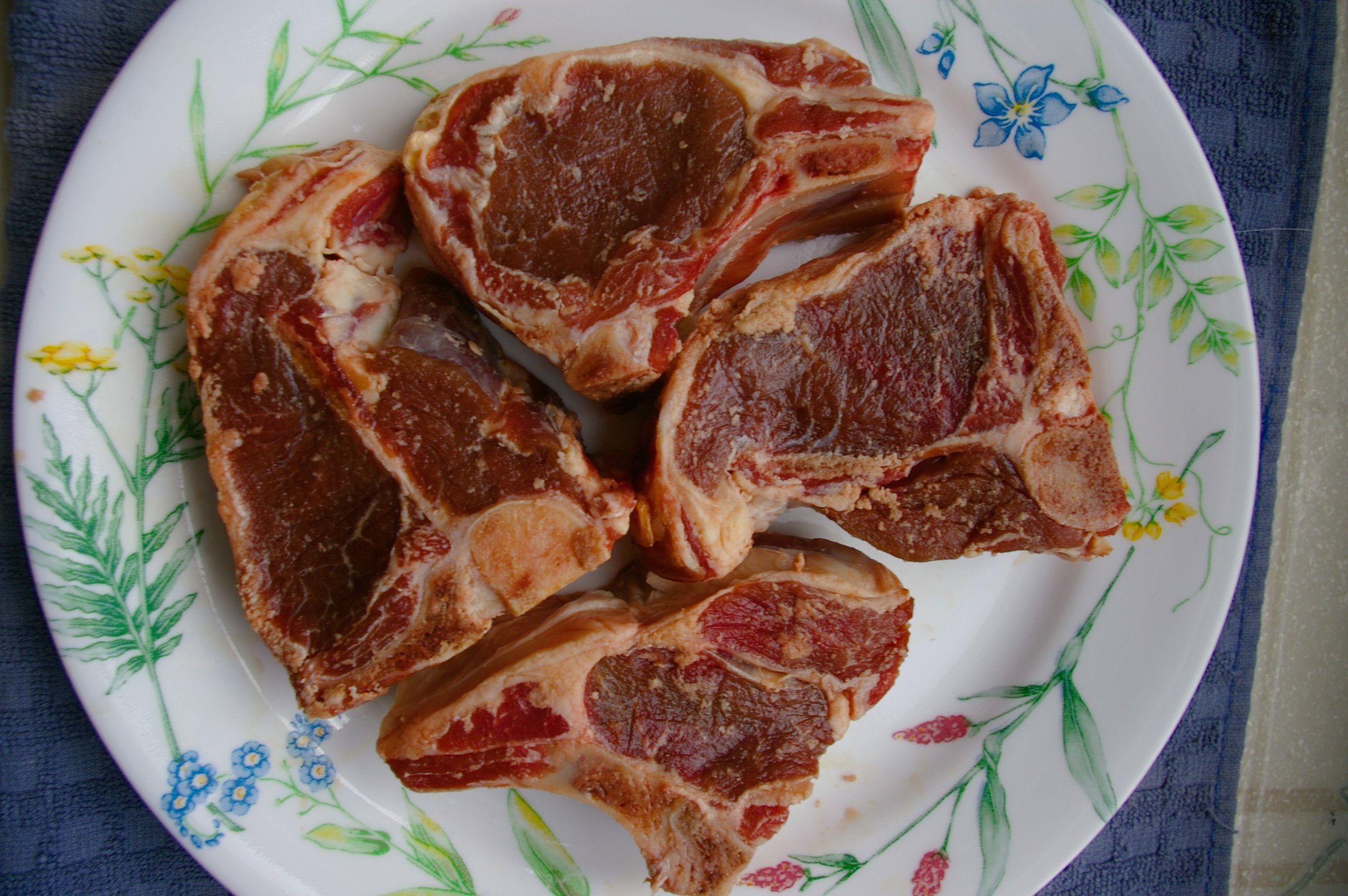What are katahdins?
Katahdin sheep are a breed of hair sheep developed in the United States. The Katahdin breed originated at the Piel Farm in north central Maine where Michael Piel was an innovator and amateur geneticist who enjoyed raising livestock. His first intentions related to establishing a sheep enterprise were to use sheep to graze power lines instead of spraying or mowing the vegetation. He then developed other ideas on how to employ sheep for land management.
In 1956 and 1957, Piel began making inquiries about hair sheep after seeing pictures in a National Geographic magazine of West African hair sheep. He eventually made contact with Richard Bond of the U.S. Agricultural Research Service in St. Croix, Virgin Islands who was working with hair sheep flocks on the island.
Three "African Hair Sheep," as they were called then, were imported to Maine from St. Croix on November 21, 1957, All were less than a year of age, born triplets, unrelated for many generations, and woolless with woolless siblings. One female was tan in color, the male and another female were white. The cost was $10 plus $75 shipping for each lamb.
The ram lamb, "King Tut," was used for breeding a handful of ewes in December 1957, including Tunis, Southdown, Hampshire, Suffolk, and the "African" ewe lambs. -From this point on, crosses of many breed combinations (including Cheviots and other "Down" breeds), were made as Piel tried to determine what would create the type of ewe he was looking for. He was particularly selecting for hair coat, meat-type conformation, high fertility, and flocking instinct.
In the early 1970s, Piel felt he had come close to his goal of a "meat sheep that did not require shearing." He selected from his large flock approximately 120 of the best ewes and called them "Katahdin" sheep after Mt. Katahdin, the highest peak in the state of Maine.In October 1975, Piel imported a handful of Wiltshire Horn sheep from Wales via Canada. He intended to improve size and bone by incorporating the Wiltshire into the Katahdins. The first crosses were born in 1976.
Paul and Margaret Jepson of Vermont had become acquainted with Piel while trying to locate Wiltshire Horn stock and decided the newly developed Katahdins would suit them better. They purchased some sheep from Piel in the mid-1970s and established the first satellite flock of Katahdins. The Jepsons then experimented with incorporating St. Croix blood (another hair sheep breed akin to the original "African Hair" type) into their flock in the early 1980s.
Heifer Project International, an international livestock development charity, took an interest in Piel's work and his "improved" hair sheep. HPI realized that Katahdins were well suited to the southern U.S. and built a sizeable flock at their center in Arkansas through the 1980s based on stock from Piel Farm and Jepsons.
Michael Piel died suddenly of a heart attack in December of 1976. The Wiltshire Horn influence in the Piel Farm flock increased in the late 1970s as scale and bone improved somewhat. However, the undesirable presence of horns, decreased prolificacy and flocking instinct, and a flightier disposition resulted from incorporating the Wiltshire Horn. During the early 1980s, under the leadership of Barbara Piel and farm manager Charles Brown, flock selection was against horns.
Katahdin Hair Sheep International was incorporated in 1985 as a breeders' association and registry by Piel Farm, Heifer Project, and Donald Williams. The first inspection of animals for the original registry flock book was conducted in 1986. Stan Musgrave, an animal scientist from Maine familiar with the Piel flock, inspected all Katahdins known to exist across the United States. The first KHSI members were accepted in 1987, and 23 breeders agreed to join KHSI and register their Katahdin stock.
Katahdin are hardy, adaptable, low maintenance sheep that produce superior lamb crops and lean, meaty carcasses. They do not produce a fleece and therefore do not require shearing. They are medium-sized and efficient, bred for utility and for production in a variety of management systems. Ewes have exceptional mothering ability and lamb easily; lambs are born vigorous and alert. The breed is ideal for pasture lambing and grass/foragebased management systems.
They have demonstrated wide adaptability. They were derived from breeds that originated in the Caribbean and British Islands and the state of Maine was their original home. In cold weather, they grow a very thick winter coat, which then sheds during warm seasons. Their smooth hair coat and other adaptive characteristics allow them to tolerate heat and humidity well. Katahdins are also significantly tolerant of internal and external parasites and if managed carefully require only minimal parasite treatment.
Katahdins are docile so are easily handled. They exhibit moderate flocking instinct. Live weight of a mature ewe in good condition usually ranges from 120 to 160 pounds; a mature ram will weigh 180 to 250 pounds. Average birth weight of twins is about 8 pounds.
